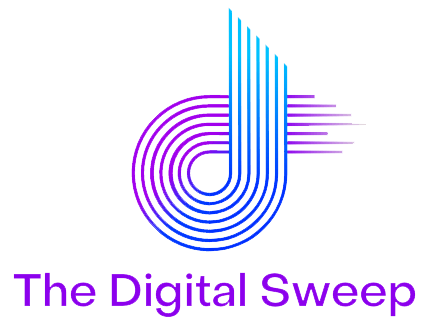How many times did you make a purchase decision after trying a free sample of a product that you had no intention of buying? Perhaps a piece of local cheese in the supermarket or a cup of coffee in a shopping mall from a brand you hardly heard of before?
Chances are you’ve already encountered such experiences at least multiple times in your lifetime. Then, you already know one form of experiential marketing.
Event Planning and Brand Managing in One
Organizing such incidents where potential customers interact with brands in real-life situations is a common practice in marketing.
The focus of an experiential marketing campaign is to create a participatory environment to initiate conversations with the public, increase brand awareness, collect data about prospects, and hopefully increase sales.
Basically, instead of running copywriting ad campaigns only, you also put your effort into building experiences or activities that engage your audience with your products or services.
Common Event Types Experiential Marketers Organize
Offering a free sample of a product is one type of experiential marketing. There are many others.
Typical event types include:
- Business conferences
- Product demos and samplings
- Trade show activities
- Award ceremonies
- Launch parties
- Drive-in parties
- Pop-ups
- Retreats
- Live concerts
- Tours
- Kiosks
- Branded exhibitions and art installations
- Virtual and metaverse marketing events
Popular Examples of Experiential Marketing
It’s common for two brands to join forces for such experiential campaigns. For instance, the entertainment retailer Zavvi partnered with the toy brand Lego. Together they built a pop-up store to feature the Lego sets available in Zavvi stores. This was a perfect case to get people interested in Zavvi’s Lego assortment.
Sometimes brands collaborate with artists or musicians instead of another company. KFC teamed up with rapper Jack Harlow for a partnership to provide engaging experiences for the rapper’s fans while raising awareness about the brand’s innovative menus. There was, for example, one offering called KFC’s Quick Pick-Up that enabled to order Harlow’s favorite KFC foods and allowed access to dedicated VIP parking spots at the restaurant’s location. The main target of the campaign was to attract younger generations to KFC.
In order to raise awareness about its “A Perfect Planet” program, BBC burned a billboard placed in Manchester. The purpose was to bring deforestation and global warming into the spotlight. Instead of flames, environmentally friendly vapors were implemented.
The color company Pantone ran a pop-up café in Monaco with items all branded with Pantone’s iconic color swatches.
Sportwear brand Ellesse teamed up with singer Zara for a shoppable live concert where the singer wore outfits from the brand’s collection. During the concert, she was surrounded by TikTok creators who were also wearing Ellesse.
Airbnb turned Will Smith’s wing of the iconic The Fresh Prince of Bel-Air mansion into one-night stays at an incredibly low cost of $30.
Fortnite Rift Tour is an example of metaverse experiential marketing. It was a partnership between the singer Ariana Grande and the game giant Fortnite. This immersive online musical experience attracted millions of international audiences during the pandemic days. During the metaverse tour, visitors were able to travel through unique Fortnite environments and enjoy a spectacular performance from Ariana Grande.

The sports equipment company Globetrotter let its customers stay in a rain chamber that simulated stormy winds. The idea was to demonstrate how stable the Globetrotter’s equipment was.
The beer company Desperados set up a one-of-a-kind part experience in Poland. During the event, a light show was created from the mobile phones’ of 2000 participants. Attendees were asked to give up their phones in return for a beer.
The architecture firm Snarkitecture wanted to draw attention to minimal clothing. Inspired by mirrored surfaces, the campaign aimed to create a reflected space impression. To this end, the company transformed an industrial space into two monochromatic rooms.
Another interesting experiential marketing example is one from the entertainment company Paramountplus. In order to promote its Halo series, it ran a marketing campaign where 400 drones created scannable QR codes in the skies of Austin.
Best Practices: Analyze Your Customer, Business Objectives, and KPIs
First of all, be clear about your objectives. Are you trying to increase audience engagement or attract leads?
Also, analyze your customer database to come up with the best event type that will appeal to them and determine your budget.
Then, choose the performance indicators (KPIs) and key metrics that are important for you to measure the success of your experiential marketing campaign. Depending on your business goals, they can be
- The number of attendees
- The number of leads and new customers
- Social media engagement
- Email click-through rates
- If sponsors are involved, you should measure metrics like sponsor page views and other activities related to sponsorship engagement.
- Design your future campaigns based on the lessons learned from the past and current events. For this purpose, you can run surveys to drive insights about what worked and what did not.
Furthermore, take into account the following tips when you want to deploy experiential marketing campaigns.
- Create an experiential marketing campaign that reflects your brand values.
- Encourage participation.
- Such experiences should be fun. But at the same time, don’t forget about your business goals. The experience should be in line with your targets.
- Invent new ways to make your experience sharable.
Closing Thoughts
Talk to any marketing expert worth their salt, and they’ll tell you that experiential marketing can be very effective.
Why? Because they form lasting connections between your brand and customers.
However, to conduct successful campaigns, there are some points to consider, as highlighted above, with identifying your business objectives, metrics, and suitable event types being the most important of all.














0 Comments